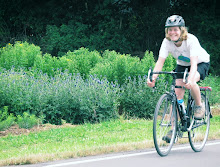I get asked this question a lot, usually by people back home, but sometimes by people who I talk to on the bus or other random places. I’ve worked up a series of answers, none of which are useful in conversation, at which time I usually answer “great”, trying not to be sarcastic and add something like “How is it for you?”
How is India?
India is like having a considerate but awkward boyfriend who refills your water glass before leaving the cafeteria table and always saves a seat for you on the bus, then takes half an hour to work up the nerve to start a conversation.
India is wildly entertaining, especially when being introduced to children. The best story is when I met one little boy, who, upon hearing my name, looked up at me carefully, the wheels in his head turning rapidly. The first thing everyone wants to know is where I’m from, and he thought he could figure this out on his own, even though he’d never met a “foreign” before.
“China?” He asked.
I think his thought process was something like “Ok, blonde hair, blue eyes, tall – oh, what the hell, they all look the same to me.”
India is a devoted friend you met five minutes earlier, the young Muslim woman who stands in the rain on the side of a busy road waving goodbye as the bus pulls away, a flashy sliver of pink showing under her black burqa.
India is the 19th century American west – seemingly lawless, incredibly entrepreneurial, where women are treated as ladies in public and servants at home. Only here there’s no opportunity to start afresh. Where you’re from, what your parents do, and what religion you follow are the main criteria by which you are always assessed and categorized.
India is completely fearless. While in Bangalore, I walked to a mall “up the street” from where we were staying. Turns out it was up the street, through a construction site (unbarricaded, of course), and down a busy overpass. No sidewalks. While I was walking on the overpass, cars whizzing by my elbow at top speed, a little girl ran up next to me and started doing cartwheels to earn a few rupees. I paid her off to avoid what seemed likely to be a grisly accident, although she acted as if she might as well be doing tricks on my front lawn.
India is a 24-hour soundtrack. In the city, there’s the constant background of horns from the nearest road – the rickshaw’s low buzz, short blasts from trucks, high-pitched honks from motorcycles, musical tones from tricked-out cars, feeble dings from bikes – over which crows call out, kids shout, telephones ring, clothes are scrubbed and, invariably, someone is drilling concrete or hammering. On the farm, cicadas, songbirds, owls, crickets and frogs replace the horns, with monkey calls and shouts from the neighbors occasionally chiming in.
India is paparazzi with camera phones. Apparently, the sight of a foreign is so thrilling to some people (mostly 15-20 year old boys) that they must take a photo. Somewhere, five or six Indian guys now have a picture of an angry white woman flipping them off to show all their friends.
India is dirty. Not just in a trash sense, although you can find it just about everywhere in layers of various thicknesses, but in a dusty, grimy sense. At first I thought Sunita was just obsessed with baths and sweeping the floor but then I realized every time you step onto a road or open a window you’re being assaulted by the dirt that seems to fly everywhere. Although Sirsi has plenty of paved roads there always seem to be strips of bare ground in between, constantly stirred up by the flow of human, auto and animal traffic. There are no emissions standards for vehicles, which creates another dirt factor when you think about all the exhaust going into your lungs and onto your clothes (which must be washed after one wearing).
India is a good review of economics 101. For example, this morning I laid in bed, unwilling to go out into the damp, chilly air, and calculated how much I would pay for a hot, fresh cup of Sumatran roast from my favorite Eugene coffee shop. The result came out somewhere between $15-$20, which I then converted into an opportunity cost of four pints of good Oregon microbrew or 3.7 calzones from the Dough co.
Subscribe to:
Post Comments (Atom)




No comments:
Post a Comment